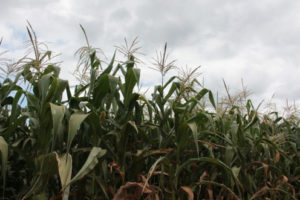FoodAfrica WP5 conducted a baseline study in 2013 in Meru and Tharaka-Nithi in Eastern Kenya where aflatoxin occurrence is considered to be high. Intensive trainings about aflatoxins were provided in order to disseminate knowledge of aflatoxin mitigation to a maximum number of households.
Communities of both Meru and Tharaka-Nithi counties are well-aware of aflatoxin issues related to insufficient maize drying. Even though many lack deeper knowledge of aflatoxins, they believe their stored maize could be contaminated. Aflatoxin intensity reported in this study lies in the same range that has previously been reported in eastern Kenya during non-outbreak years.

In the IFRPI led study, the whole group of tested participants showed positive aflatoxin levels in their blood, even though it had been a year of comparatively low aflatoxin contamination of maize. This suggests that in this population, which relies heavily on maize as a dietary staple, even relatively small amounts of aflatoxin contamination in maize may affect human health. Identifying ways to mitigate aflatoxin exposure in this region, for example through effective post-harvest practices, is therefore of high significance.
Baseline data were collected from the study area in June 2013 focusing on children under the age of two and women in the last stage of pregnancy. In each of the enrolled 665 households a survey on household and dietary topics was administered to a female respondent and a survey regarding farm practices to main farm manager. In most cases, the woman was responsible for the farm management, and thus responded to both questionnaires. A blood sample was taken from the female respondent for aflatoxin-albumin testing.
The next step of the project will be an intervention testing post harvest practices, such as a village level dryer. Following the completion of the intervention in May 2015, endline data will be collected from the same households as in the baseline, in order to identify the effect of the post harvest practices on aflatoxin levels in both maize and human blood.
More information:
Vivian Hoffmann, v.hoffmann@cgiar.org, International Food Policy Research Institute (IFPRI)
